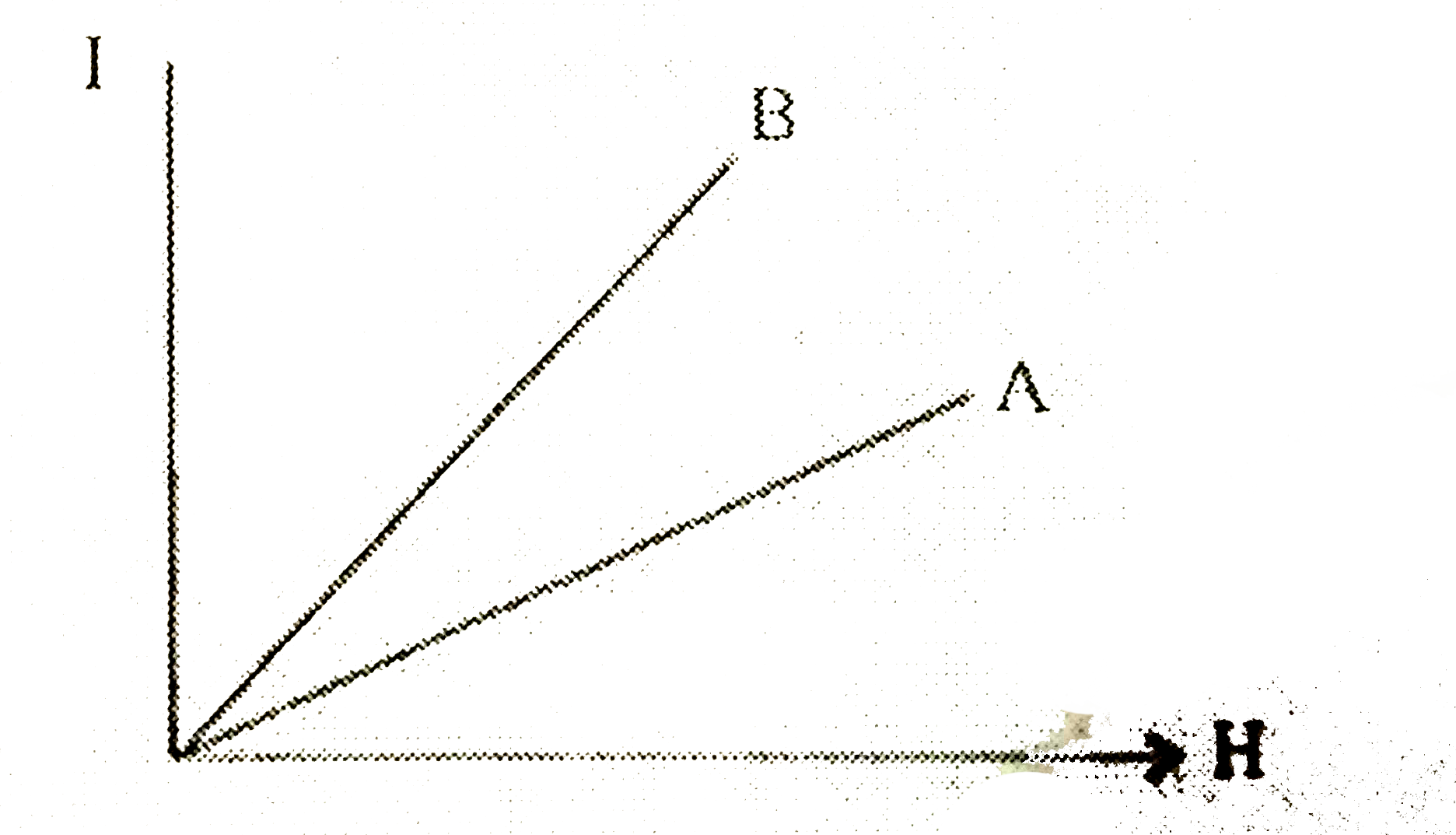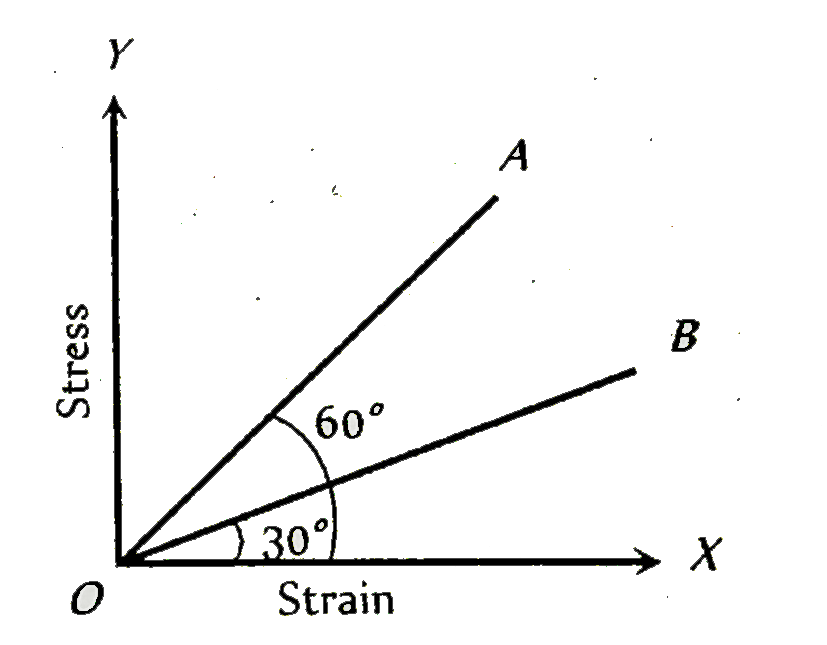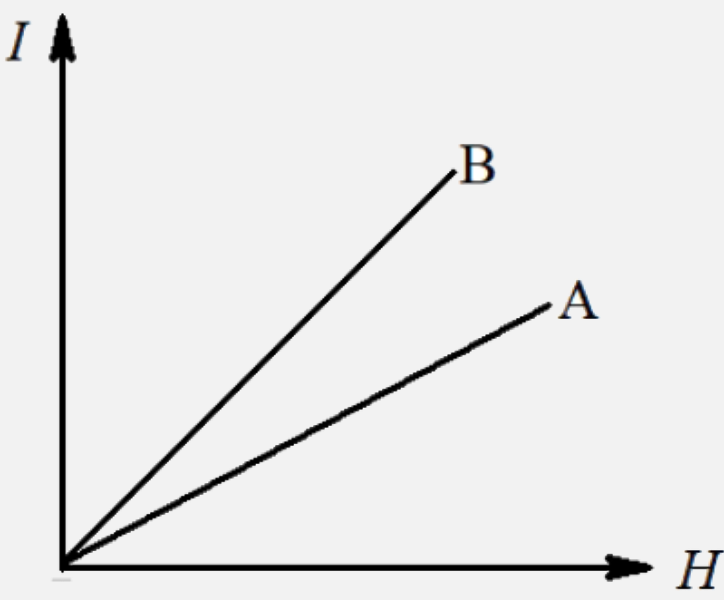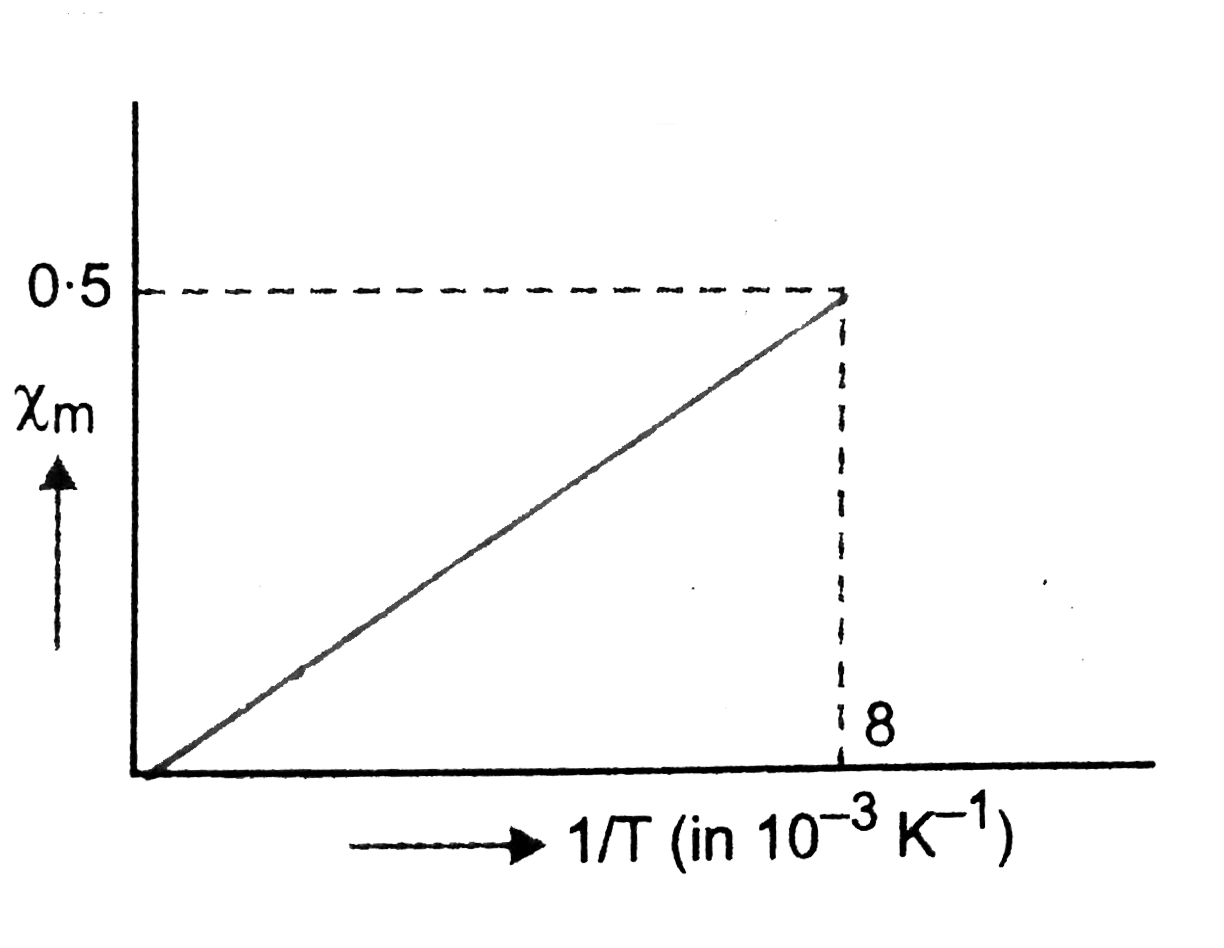Figure shows the variation of intensity of magnetisation →M versus the applied magnetic field intensity →H for two materials A and B:
(a) Identify the materials A and B.
(b) Why does the material B, have a larger susceptibility than A for a given field at constant temperature ?

(a) Material A is diamagnetic because its magnetisation is negative
Material B is paramagnetic having positive magnetisation .
(b) Magnetic susceptibility x=MH and its value is given by slope of M - H curve. As slope of curve for material B is greater, hence B has a large susceptibility than A for a given field at constant temperature.
Topper's Solved these Questions
- MAGNETISM AND MATTERBOOK - U-LIKE SERIESCHAPTER - MAGNETISM AND MATTEREXERCISE - LONG ANSWER QUESTIONS-I
20 Videos
- MAGNETISM AND MATTERBOOK - U-LIKE SERIESCHAPTER - MAGNETISM AND MATTEREXERCISE - LONG ANSWER QUESTIONS-II
2 Videos
- MAGNETISM AND MATTERBOOK - U-LIKE SERIESCHAPTER - MAGNETISM AND MATTEREXERCISE - VERY SHORT ANSWER QUESTIONS
28 Videos
- EXAMINATION PAPER 2020 (SOLVED)BOOK - U-LIKE SERIESCHAPTER - EXAMINATION PAPER 2020 (SOLVED)EXERCISE - SECTION D
6 Videos
- MODEL TEST PAPER 1 (UNSOLVED)BOOK - U-LIKE SERIESCHAPTER - MODEL TEST PAPER 1 (UNSOLVED)EXERCISE - SECTION B
1 Videos
Similar Questions
The following figure shows the variation of intensity of magnetisation versus the applied magnetic field intensity, H, for two magnetic materials A and B :
(a) Identify the materials A and B.
(b) Why does the material B, have a larger susceptibility than A, for a given field at constant temperature?

View SolutionThe following figure shows the variation of intensity of magnetisation versus the applied magnetic field intensity, H, for two magnetic materials A and B :
(a) Identify the materials A and B.
(b) Why does the material B, have a larger susceptibility than A, for a given field at constant temperature?

View Solution
Knowledge Check
The stress versus strain graphs for wires of two materials A and B are as shown in the figure. If YAandYB are the younng's moduli of the materials, then
 AYB=2YABYA=YBCYB=3YADYA=3YB
AYB=2YABYA=YBCYB=3YADYA=3YB
The following figure shows the variation of intensity of magnetisation I versus the applied magnetic field intensity H, for two magnetic materials A and B

Which of the material have a larger susceptibility for a given field at constant temperature?
View SolutionThe following figure shows the variation of intensity of magnetisation I versus the applied magnetic field intensity H, for two magnetic materials A and B

Which of the material have a larger susceptibility for a given field at constant temperature?
View SolutionHow does the intensity of magnetization of a paramagnetic material vary with increasing applied magnetic field?
View SolutionHow does the intensity of magnetization of a paramagnetic material vary with increasing applied magnetic field?
View SolutionFigure shows the variation of susceptibility of a material with 1/T, where T is the temperature. Calculate curie constant of the material.

View SolutionThe stress versus strain graphs for wires of two materials A and B are as shown in the figure. If YAandYB are the younng's moduli of the materials, then

View SolutionThe stress versus strain graphs for wires of two materials A and B are as shown in the figure. If YAandYB are the younng's moduli of the materials, then

View Solution
